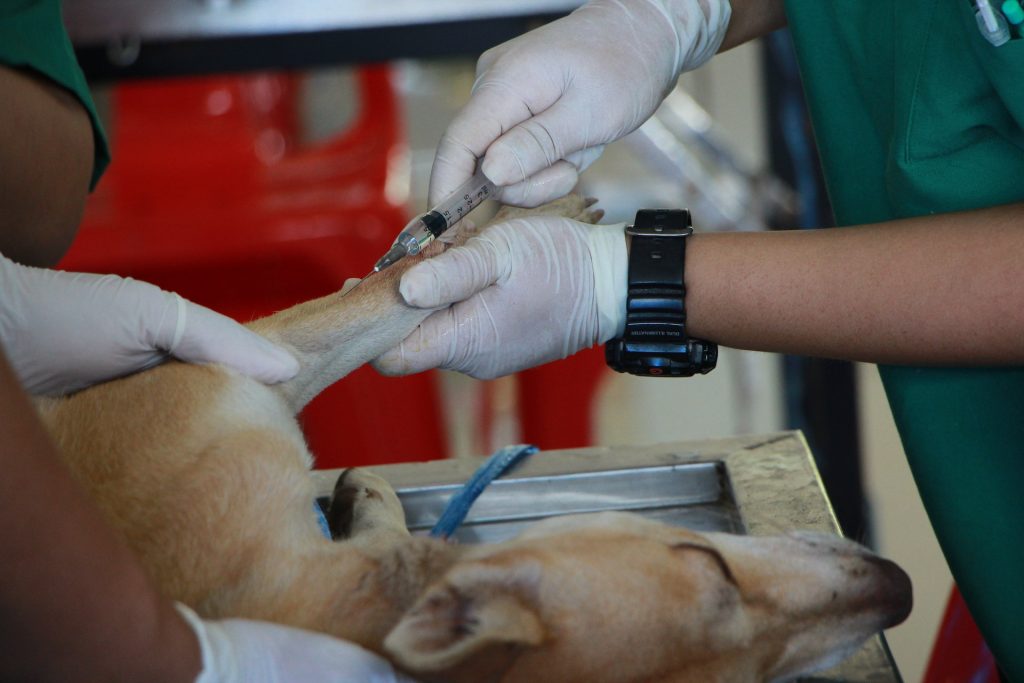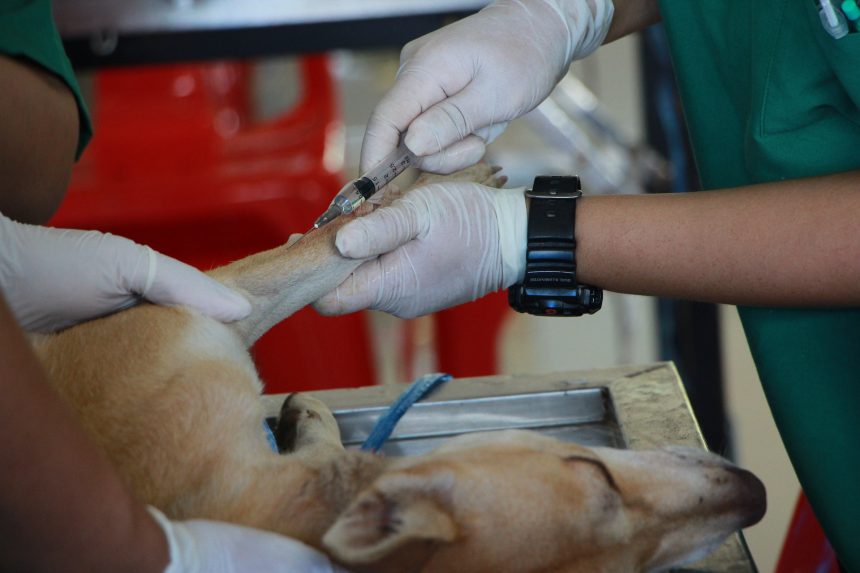Painful boils that erupt into squirming maggots, sound like narrating a scene from a horror movie, but it’s not, these mango worms are all too real. Mango worms, also known as tumbu worms, are an African parasite that afflicts dogs as well as other mammals. If a dog steps in a puddle with newly hatched worms, then within 25 seconds, these worms will burrow into the host dog’s skin to start growing on their journey of transforming into mango flies. These infestations lead to painful boils which also bring the risk of infections or other diseases. These are generally not fatal.

What Are Mango Worms?
Mango worms are the larvae of the mango or tumbu fly, these are native to Central Africa. Mango worms survive best in hot and humid environments, be tropical or subtropical. Though mango flies are mainly found in Africa, there have been rare cases of infections in other parts of the world, transported via travel. As the larvae and eggs are known to get into clothing, they can ride along in luggage and cause infestations outside of their known habitat.
Mango worms are parasitic, they burrow under the skin of a host mammal until they are ready to pupate. In the majority of cases, a mango worm infestation leads to great pain as well as discomfort as the worms grow, accompanied by a high chance of infection. In severe cases, mango worms can burrow deeper into the tissues, leading to gangrene, serious infection, or in the worst-case death of the host.
Life Cycle of Mango Fly
Adult mango flies lay eggs in batches of around 100 to 300 eggs at a time. These eggs are usually laid in dry sand that has been contaminated with feces or in clothing left on the ground. Mango fly eggs are small, they can barely be seen without a microscope. The eggs will hatch within three days, and for the next several days the tiny worms lie waiting for a host to come. Worms wait near the surface of the sand, waving about and waiting for something to touch them, when a mammal sits or steps on the sand, the worms start burrowing into the hosts’ skin. They burrow into thin skin way quicker than thick skin, thus making them a greater danger to smaller as well as younger dogs and people.
After mango worms find a host, they stay just under the surface of the skin for around 1-2 weeks, eating the inner skin to continue their growth. At first, these worms are painless and nearly unnoticeable, however, as time passes a painful boil will develop over each mango worm. The boil that forms will be red and solid, these will have a small hole in the center. The worm will molt multiple times as it continues to grow, and the boil will start to fill with pus.
When the mango worm is ready to pupate, it will burst out of the boil and fall on the ground. For the next few weeks, it will pupate and transform from a maggoty worm into an adult Mango fly.
How to prevent Mango Worm infestation?
If you reside in an area with a large population of mango flies, it can be hard to protect your dog, however, there are a few things you can do. The obvious is to keep your area clean of feces and remove anything that can attract flies, for example rotting fruit. Make sure to use insect repellent where possible to keep flies away.
Mango worms can lay eggs in clothing, so it’s best to avoid leaving bedding or clothing on the ground. If possible, for bedding use dry clothes, or use the high-heat dryer or iron the clothes used for bedding regularly to kill eggs and larvae.
It is also important to kill mango flies at all killable stages of life. Full grown mango flies are usually most active at dawn and dusk and during the hottest parts of the day. They often rest on ceilings, you can kill them, then. Mango flies can also be destroyed while they are in the process of pupating. Worms removed from a mango worm boil should be finished, to ensure no further spreading.
If you are traveling to an area that has a problem with mango worms, follow the same prevention tips stated above. After returning to your residence, clean all clothing as well as luggage thoroughly. Wash and dry clothes in the hottest setting that is allowed for the clothes.
How to identify If your Dog Has Mango Worms?
The first step in identifying mango worms is to look at travel history. If you live in an area with endemic mango worms or if you recently traveled there, your dog may be at risk of infestation. Mango Worms are native to East Africa, South Africa, as well as Uganda, however, there have been cases in other countries, such as the United States, on rare occurrences. Inspect your dog’s skin closely for bumps or boils that develop during the mango worm’s lifecycle.
Mango worm infestations start as small red pimples, these usually fade before a larger boil forms. The boils are reddish and hard, containing a small opening or hole in the middle that will likely ooze liquid. If there are many worms close together, the whole area will likely be tender and swollen. The best way to identify mango worms definitively is by finding and removing a worm, then it can be identified visually.
How to Treat Mango Worms?
If you suspect your dog is infested with mango worms, you need to contact your vet to get help in dealing with this infestation. The best way to get rid of mango worms is by removing them from the body, there are various methods to do so. People try to suffocate the worms by covering the boils with petroleum jelly or wax, as this cuts off the worms’ air supply, which forces them to wriggle out.
You can also squeeze the worms out, especially if you find out in the later stages of infestation. Pinching the sides of the boil like you are popping a pimple will force the mango worm out. Tweezers can also be used in removing worms completely. However, you should remove the entire worm, because if part of the worm remains in the skin, it will rot and cause further complications.
After you remove the worms, treat the wound with antibiotics. An antibiotic solution should be used to clean the boils, the vet might prescribe an oral antibiotic.
Treating your dog for parasites like mango worms may be a little costly, but you should be able to manage these costs with good pet insurance.
Can I get Mango Worms from my Dog?
Mango worms will attack all types of mammals, this also includes humans. Mango worms do not pass directly from host to host, once they are in a host’s body, they stay there. So, you won’t get mango worms from the dog. However, if your dog has had a mango worm infestation, it is possible you catch them from the same source. Mango worm infestations are similar in humans as well as dogs, if your dog experiences a case of mango worms, the same prevention tips above will help keep you as well as others safe from the parasite.
Conclusion
Mango worms are a severe and dangerous parasite that can affect dogs, humans, as well as other animals. If you happen to live in an area that has mango flies or have plans to travel through an area with mango flies, you need to make sure you take proper precautions. Mango worms are not usually lethal; however, the reason isn’t enough to take them lightly. Severe infestations can lead to a painful death of the host, even if your dog avoids that, the pet will suffer from high levels of pain, and infection, along with an increased risk of disease. Few precautions to prevent infestation will prevent such suffering.
If you liked this article (or if it helped), leave a comment below or share it with friends so they can also know about Mango Worms in Dogs: Causes, Symptoms, and Treatment.





.png)
.jpg)

